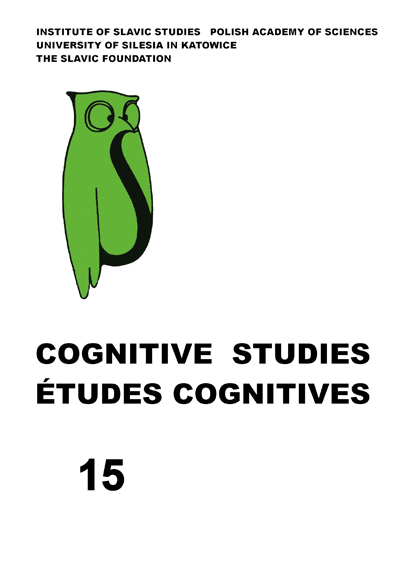Multilingualism and Dictionaries
Multilingualism and Dictionaries
Author(s): Wojciech Paweł Sosnowski, Violetta Koseska-ToszewaSubject(s): Language and Literature Studies, Theoretical Linguistics, Syntax, Semantics
Published by: Instytut Slawistyki Polskiej Akademii Nauk
Keywords: theoretical contrastive linguistics; contrastive non-lexical and lexical semantics; semantic categorisers; syntactic categorisers; state; event; net model of tense and aspect; transitive/intransitive;
Summary/Abstract: The Russian-Bulgarian-Polish dictionary that we (Wojciech Sosnowski, Violetta Koseska-Toszewa and Anna Kisiel) are currently developing has no precedent as far as its theoretical foundations and its structure are concerned. The dictionary offers a unique combination of three Slavic languages that belong to three different groups: a West Slavic language (Polish), a South Slavic language (Bulgarian) and an East Slavic language (Russian). The dictionary describes semantic and syntactic equivalents of words between the languages. When completed, the dictionary will contain around 30,000 entries. The principle we build the dictionary on is that every language should be given equal status. Many of our data come from the Parallel Polish-Bulgarian-Russian corpus developed by us as part of the CLARIN-PL initiative. In the print version, the entries come in the order of the Cyrillic alphabet and they are not numbered (except for homonyms, which are disambiguated with Roman numbers). We selected the lemmas for the dictionary on the basis of their frequency in the corpus. Our dictionary is the first dictionary to include forms of address and most recent neologisms in the three languages. Faithful to the recent developments in contrastive linguistics, we begin with a form from the dictionary’s primary language and we define it in Polish. Subsequently, based on this definition, we try to find an equivalent in the second and the third language. Therefore, the meaning comes first and only then we look for the form (i.e. the equivalent) that corresponds to this meaning. This principle, outlined in Gramatyka konfrontatywna języków polskiego i bułgarskiego (GKBP), allows us to treat data from multiple languages as equal. In the dictionary, we draw attention to the correct choice of equivalents in translation; we also provide categorisers that indicate the meaning of verbal tenses and aspects. The definitions of states, events and their different configurations follow those outlined in the net model of verbal tense and aspect. The transitive vs. intransitive categorisers are vital for the languages in question, since they belong to two different types: synthetic (Bulgarian) and analytic (Polish and Russian). We predict that the equal status of every language in the dictionary will facilitate easier and faster development of an electronic version in the future.
Journal: Cognitive Studies | Études cognitives
- Issue Year: 2015
- Issue No: 15
- Page Range: 43-55
- Page Count: 13
- Language: English

